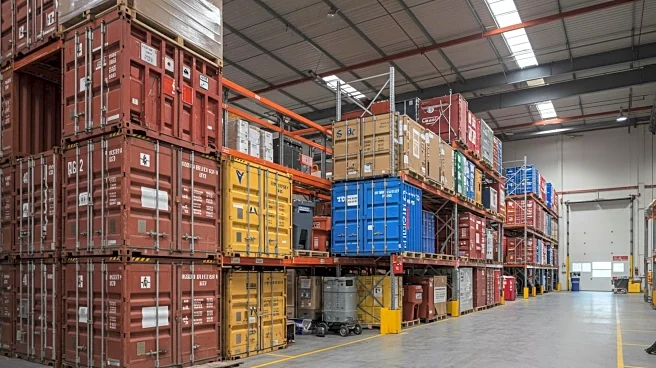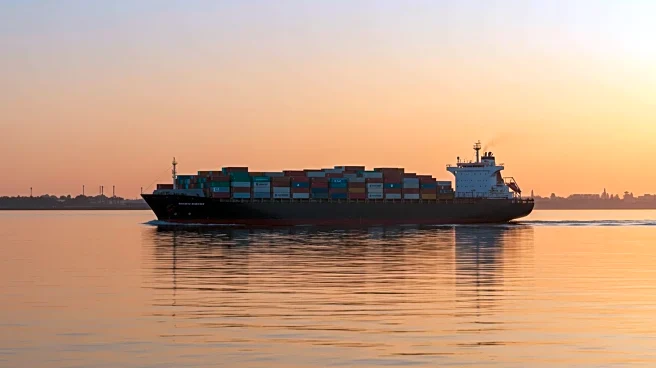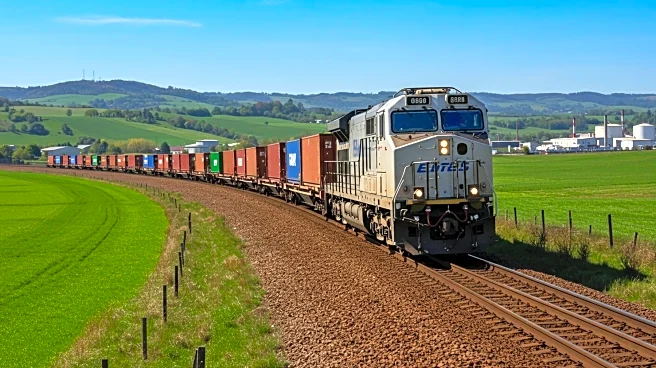What's Happening?
The U.S. trucking industry is experiencing a downturn, with fewer trucks chasing less freight, as ongoing tariff volatility and economic uncertainty weigh on demand. Preliminary net orders for North American Class 8 trucks in July marked their seventh consecutive year-over-year decrease, falling 7% compared to the same month in 2024, despite a 42% rise over the previous month. The orders were significantly below the 10-year average, reflecting caution among fleet executives due to trade tensions and fluctuating tariffs. Old Dominion Freight Line, the nation's second-largest less-than-truckload carrier, reported a 6.1% decrease in revenue for the second quarter, attributed to a decline in volumes. Despite this, the company maintained a 99% on-time performance and a low cargo claims ratio. XPO Logistics, another major player, reduced its purchased transportation costs by 53% in the second quarter, leveraging investments in rolling stock to cut outsourcing costs. Saia, the sixth-largest LTL carrier, reported a slight decrease in quarterly revenue but improved network efficiency. The industry is anticipating potential recovery, with some executives predicting a rise in truckload rates once demand rebounds.
Why It's Important?
The challenges faced by the trucking industry have significant implications for the broader U.S. economy, as trucking is a critical component of the supply chain. The decrease in freight demand and truck orders reflects broader economic sluggishness, which could impact various sectors reliant on efficient logistics. Companies like Old Dominion and XPO Logistics are adapting by optimizing costs and improving service efficiency, which may set a precedent for industry resilience. The potential imposition of Section 232 tariffs could further complicate the market, affecting pricing and availability of trucks and components. As the industry navigates these challenges, stakeholders including manufacturers, retailers, and consumers may experience shifts in logistics costs and service availability.
What's Next?
Industry leaders are focusing on strategic reinvestment and efficiency improvements to position themselves for future growth. Old Dominion is committed to maintaining capacity to support customers during periods of stronger demand, while XPO Logistics is leveraging past investments to reduce costs. Saia is optimizing variable costs and improving network efficiency, with newer markets showing promising growth. As the industry anticipates recovery, truckload rates may rise significantly, impacting pricing strategies and profitability. The appointment of Lance Stewart as CEO of P.A.M. Transport signals potential strategic shifts within the company, as it adapts to the evolving market landscape.
Beyond the Headlines
The trucking industry's current challenges highlight the interconnectedness of global trade policies and domestic economic health. The potential imposition of tariffs on trucks and components underscores the impact of political decisions on industry dynamics. Companies are increasingly focusing on sustainable practices and technological advancements to mitigate risks and enhance service delivery. The emphasis on efficiency and strategic reinvestment may drive long-term shifts in industry standards, influencing how logistics companies operate and compete in a volatile market.











